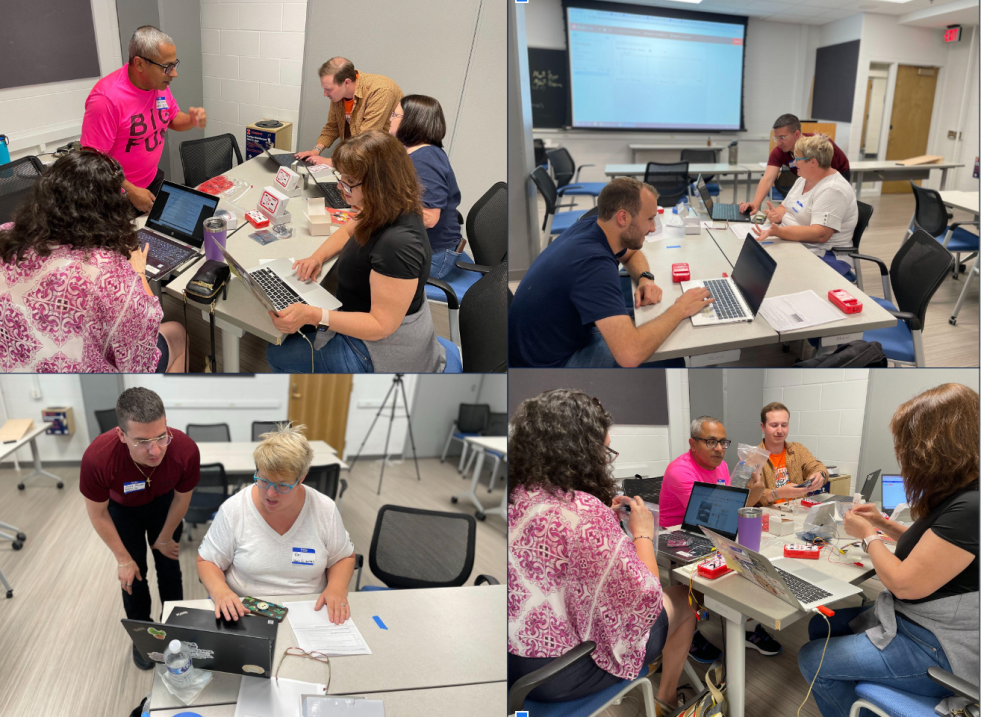Since 2020 I’ve been a fellow in the Illinois Physics and Secondary Schools Partnership program. The program was funded by a sizable grant from the NSF.
The concept was simple: the University provides their high-quality, evidence-based curriculum and lab device (iOLab) and the teachers share their practices with each other. In fact, the original main questions for the study were the following:
- How does IPaSS impact teachers? practice?
- Does the program encourage student proficiency in physics and their pursuit of STEM topics beyond the course?
- What aspects of the U of I curricula must be adapted to the structures of the high school classroom to best serve high school student populations?
The outcome has been so much more: Every teacher’s work is enhanced, which, in turn, enhances the experience of their students. This program has impacted around 12,000 students in the state of Illinois. According to AIPs data, there are around 60,000 students who take physics in Illinois each year (4% of the national enrollment), and according to the most recent study, high school teachers were the second most impactful influencers for physics undergrad students.

We know we have an access problem when it comes to high school physics. We know that most teachers of physics do not have a background in physics and teach other courses in addition to physics.

High school teachers are easily isolated and many teachers in schools with the highest diversity and the highest need lack resources to access quality content.
Through this program the 40 teachers involved, who are a representative sample of teachers in the state and physics teachers nationally. We have new teachers, new-to-physics teachers, rural, private, suburban, urban, teachers from underrepresented groups, teachers near retirement, it’s truly an amazing group. No matter where an educator is in their journey, they find themselves learning and energized by the community. As a result, we have this positive learning environment where autonomy is creating a space for true growth.
This is the key to the program: respecting educators as professionals, and giving them the autonomy, time, space and resources to create excellence.
A lot of funding goes towards fancy programs: QuarkNet, Quantum for All, etc. But the reality is that there are a bunch of teachers who just need access to exemplary resources in physics. Additionally, the fancy programs are typically a canned curriculum, and so exotic it becomes difficult for a teacher to be creative as the gap between what they know and what the program is aimed towards can be great.
Instead, this program allows teachers to bring what they know and improve upon it. The result is that teachers actually know a lot, and when given the time and space can create even better products! Instead of insisting that all teachers implement x, this program recognizes that teacher A learned about amazing j, teacher B has been trained in k and teacher C has gone to a workshop on m. The program allows all of these teachers to share these programs, resources and pedagogies and then teachers can adapt them as they make sense in their context. If a teacher wants more training, they know how and where to access the formal training.
But it’s a lot more than this. We joke that we have two week of “physics camp” and, frankly, it’s true! We bond in a way that goes beyond colleagues, we are friends and family and we support each other beyond the classroom.
For myself, more than anything this program has provided a place to not only grow and network, but to develop as a teacher-leader without leaving the classroom for another profession. Each year I come home in awe that I get to do this. I can’t wait to see what we do next.

